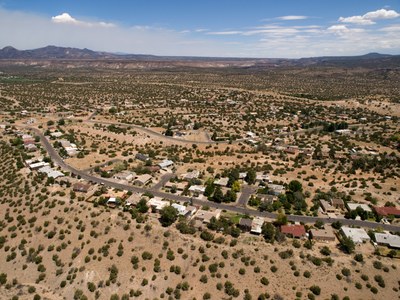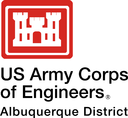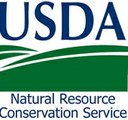Assistance for Communities

Since post-fire flooding is a real threat in New Mexico, you need to immediately assess the risk that flash flooding poses. Your first task is to identify what funds are available in the community for immediate use, and to prioritize projects that will provide the most expedient protection with those funds.
 Continuing Authorities Program: US Army Corps of Engineers
Continuing Authorities Program: US Army Corps of Engineers
This fund is for relatively small projects dealing with floodplain management, flood control, ecosystem restoration, erosion control and stream bank protection. This program is broad, including activities such as stream bank erosion protection, modifications to existing infrastructure, and more. It is funded by Congress.
 Emergency Flood Protection: US Army Corps of Engineers
Emergency Flood Protection: US Army Corps of Engineers
The US Army Corps of Engineers can provide emergency assistance during flood events. USACE emergency assistance is intended, by law, to be temporary in order to meet immediate threats. Through this program, USACE can provide technical assistance to State and local governments with regard to emergency preparedness and planning activities. Assistance is intended to develop contingency plans, evacuation plans, and exercises to lend expertise in both areas.
 Emergency Watershed Protection: Natural Resources Conservation Service
Emergency Watershed Protection: Natural Resources Conservation Service
The Emergency Watershed Protection (EWP) program provides technical and financial assistance to safeguard people and property following natural disasters, such as floods, fires, wind storms, earthquakes, and drought.
 Flood Risk Evaluation Prior to Flooding: NM Department of Homeland Security and Emergency Management
Flood Risk Evaluation Prior to Flooding: NM Department of Homeland Security and Emergency Management
This program's goals are to reduce flood risk prior to an event, and partners with Federal and non-Federal partners to provide hazard information, technical services, and planning guidance free of charge to qualified communities and Tribal governments.
 Hazard Mitigation Grant Program: NM Department of Homeland Security and Emergency Management
Hazard Mitigation Grant Program: NM Department of Homeland Security and Emergency Management
The New Mexico Department of Homeland Security and Emergency Management (NMDHSEM) is a resource for communities after the Governor has issued a State of Emergency, or after a Presidential Disaster Declaration or a Fire Management Assistance Grant (FMAG) declaration . The purpose of the program is to implement long-term hazard mitigation measures. DHSEM may also have information on other programs and resources available to your community after a wildfire.
 Permanent Flood Protection Solutions: US Army Corps of Engineers
Permanent Flood Protection Solutions: US Army Corps of Engineers
The US Army Corps of Engineers has the authority to construct large-scale flood risk management (FRM) projects, including dams and engineered levees, through the Civil Works Program. Smaller-scale projects may be constructed through the Corps' Continuing Authorities Program.
 Tribal Partnership Program: US Army Corps of Engineers)
Tribal Partnership Program: US Army Corps of Engineers)
This program enables the US Army Corps of Engineers to assist on a reconnaissance study of various water resources and related issues with Pueblos and Tribes. Examples of topics include flood damage reduction, environmental restoration and protection, watershed planning, and cultural resources studies.
 Regulatory Program Authority: US Army Corps of Engineers
Regulatory Program Authority: US Army Corps of Engineers
The US Army Corps of Engineers (USACE) can assist with permitting after a wildfire has occurred. A permit is required from the USACE for activities involving discharge of fill or dredged materials into bodies of water in the US. Dredged material includes the redistribution of rocks, gravel and sediments already in the stream, lake, pond, wetland, etc.
 Soil and Water Conservation Districts
Soil and Water Conservation Districts
Your local Soil and Water Conservation District (SWCD) may be able to provide help after a wildfire or natural disaster. For a listing of your SWCDs, visit the New Mexico Association of Conservation Districts (NMACD) website or call them at (575) 361-1413. For a list of districts and phone numbers, click here.
 New Mexico Environment Department: Ground Water Quality Bureau
New Mexico Environment Department: Ground Water Quality Bureau
The Ground Water Quality Bureau protects New Mexico’s groundwater resources as mandated by the Water Quality Act and the New Mexico Ground and Surface Water Protection Regulations (20.6 NMAC) and identifies, investigates, and cleans up contaminated sites to protect human health and the environment.
